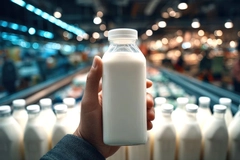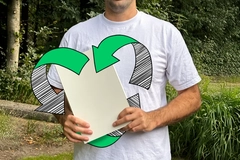Mineral oil risk: Nestlé looks for new recycled paper grades
14 Mar 2011

Nestlé said it is collaborating with paper manufacturers to evaluate different approaches for developing “new grades of recycled paper” in light of concerns about migration oil leakage into foods from packaging using newspaper based recycled board.
Nestlé said it is collaborating with paper manufacturers to evaluate different approaches for developing “new grades of recycled paper” in light of concerns about migration oil leakage into foods from packaging using newspaper based recycled board.
One promising approach is a better selection of waste material to exclude newsprint, said Hilary Green, head of R&D communications at the Swiss food giant, who added that the potential risk posed by mineral oils leaching from recycled cardboard into foods has been on the radar of packaging scientists at Nestlé “for some time”.
And Nestlé, she added, has applied internal standards to ensure that such migration is avoided.
Traces of mineral oil in food are thought to arise by their migration from the inks present both on the printed surface of the packaging and in recycled fibre, principally newspapers, used in the production of packaging.
According to the Confederation of European Paper Industries (CEPI), the paper and board sectors are investigating ways to phase out materials containing the mineral oils.
Recycled packaging policy
Nestlé, commented Green, promotes the use of recycled paper/board and other materials from sustainable resource where it makes sense and when there is no risk of migration that would pose a risk to human health or have a detrimental effect on the food.
Nestlé has had a policy on the use of recycled paper/board in contact with food for over 10 years, which is “continually updated as new knowledge becomes available.”
Green added: “Nestlé’s policy is to use recycled paper/board only from post industrial waste from the first recycling step (virgin fibre) or higher grades for packaging that is in direct or indirect contact with dry food (and no fat on the surface)."
In addition, she said that Nestlé recommends the use of low migration inks where there is no barrier material such as aluminium foil protecting the product and that it does not allow the use of recycled paper/ for packaging foods that have a fatty surface such as chocolate unless there is a functional barrier between the foodstuff and the paper/board.
Source: Nestlé
All content and features on this website are copyrighted with all rights reserved. The full details can be found in our privacy statement
Subscribe to our newsletters
By continuing to browse our site you agree to our Privacy Statement











